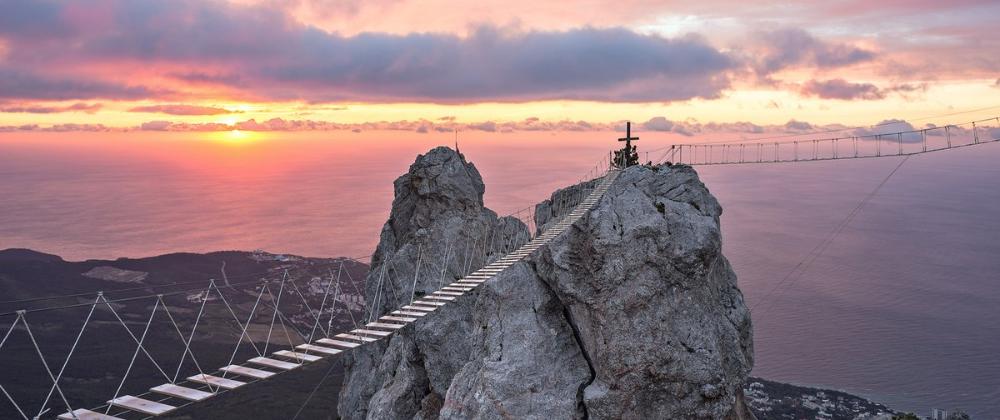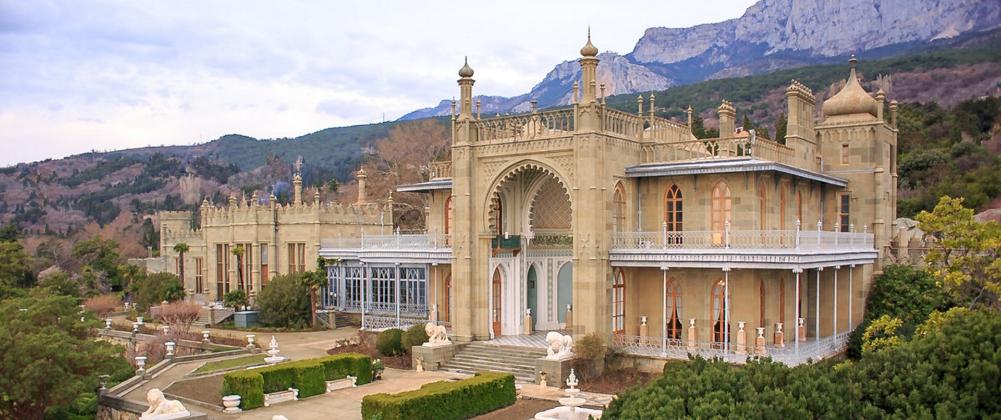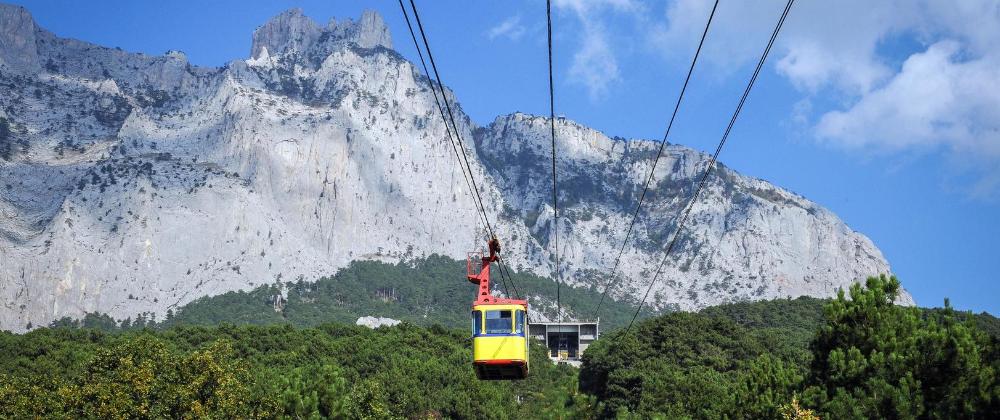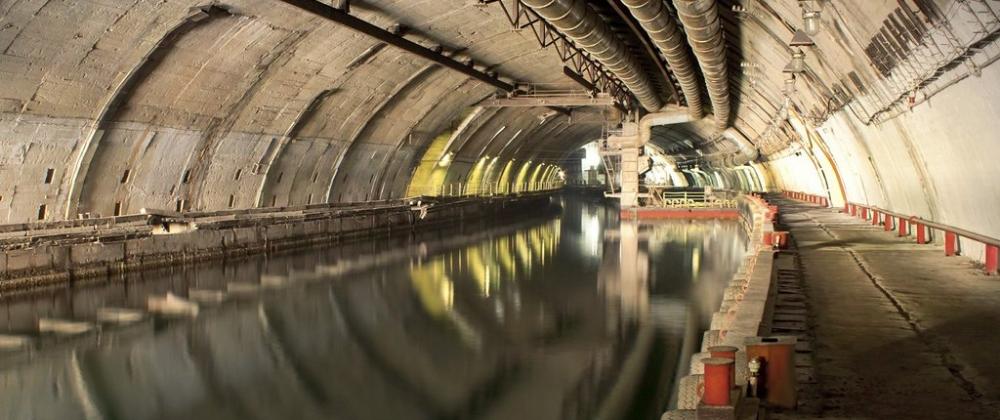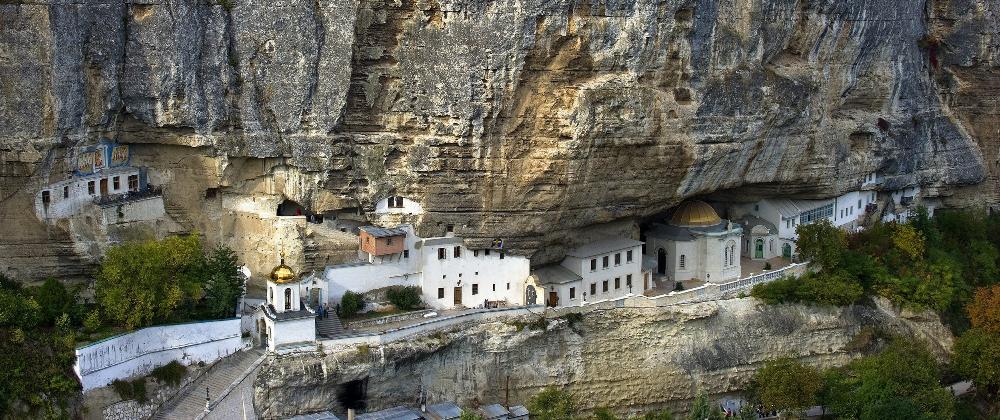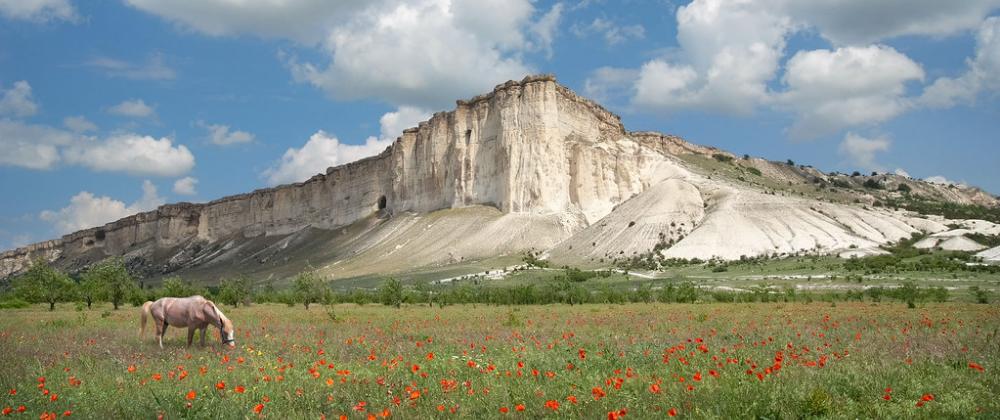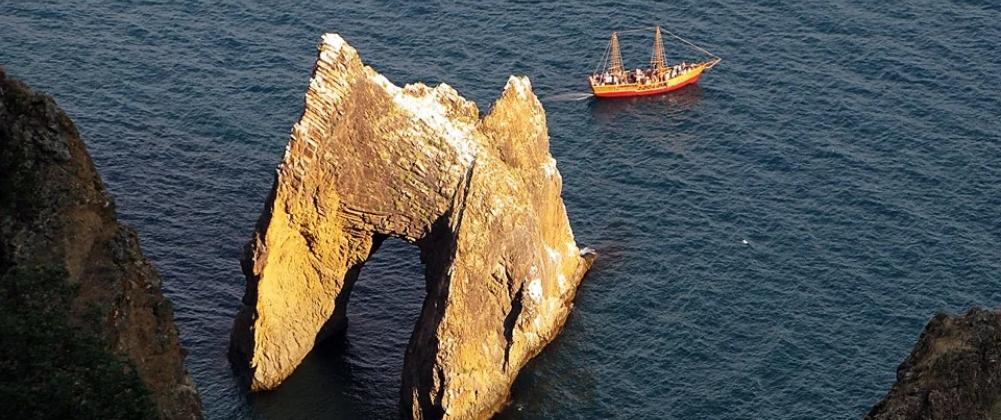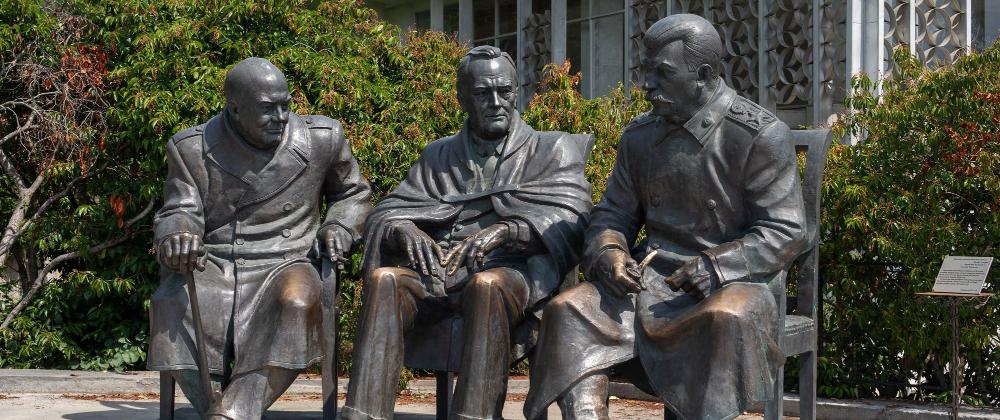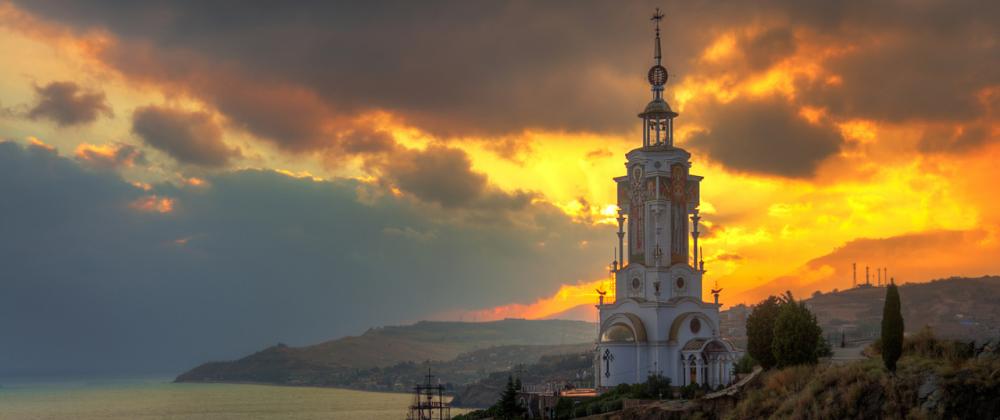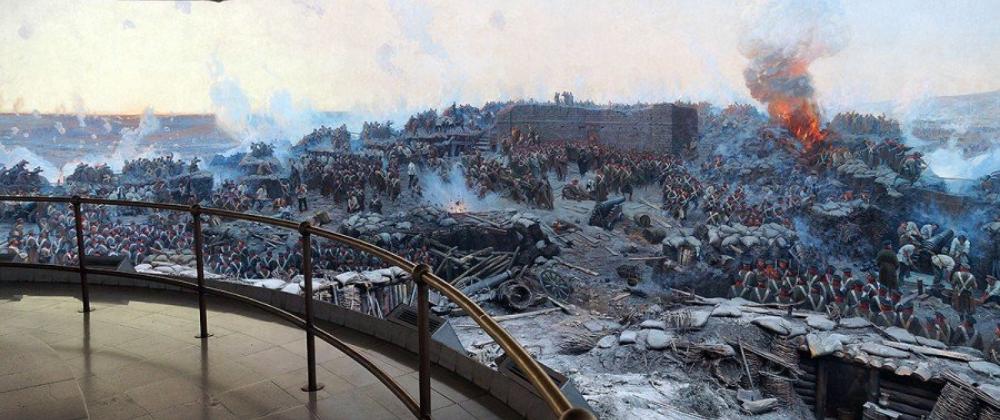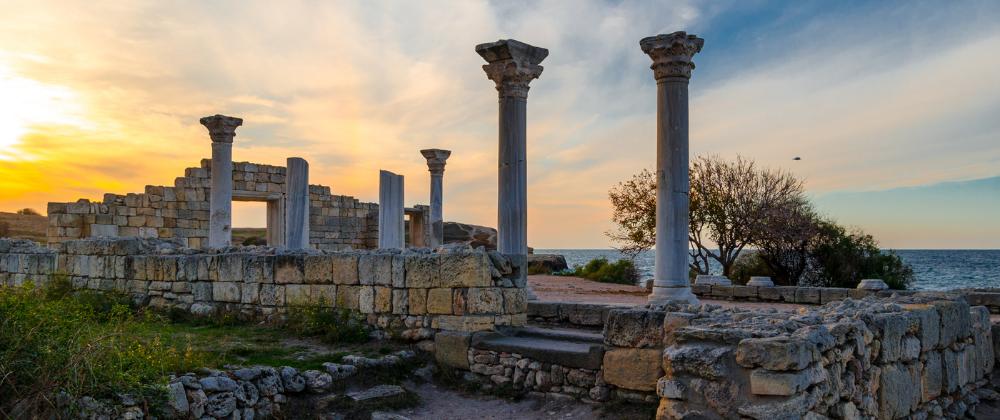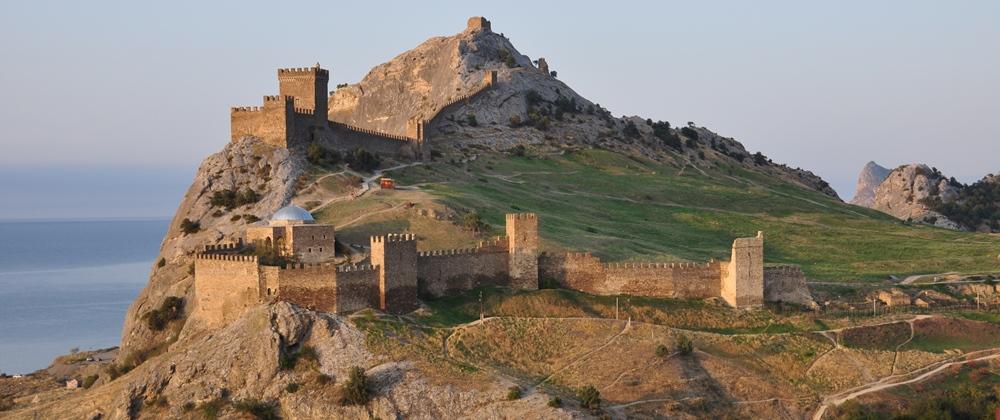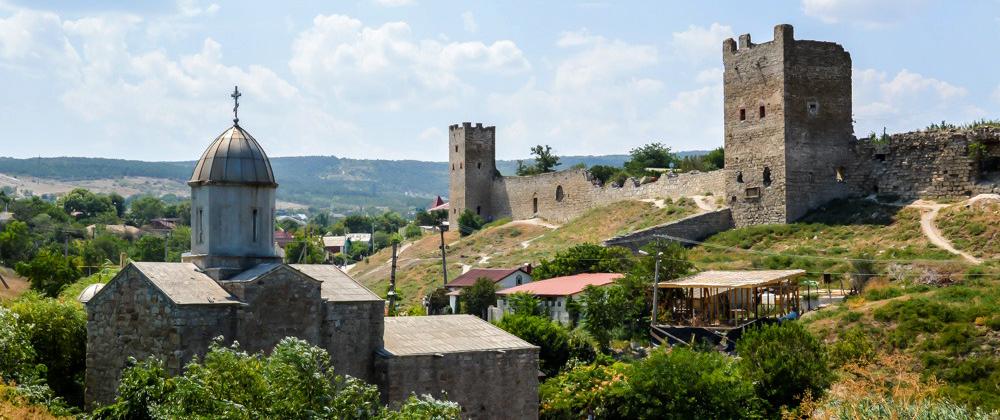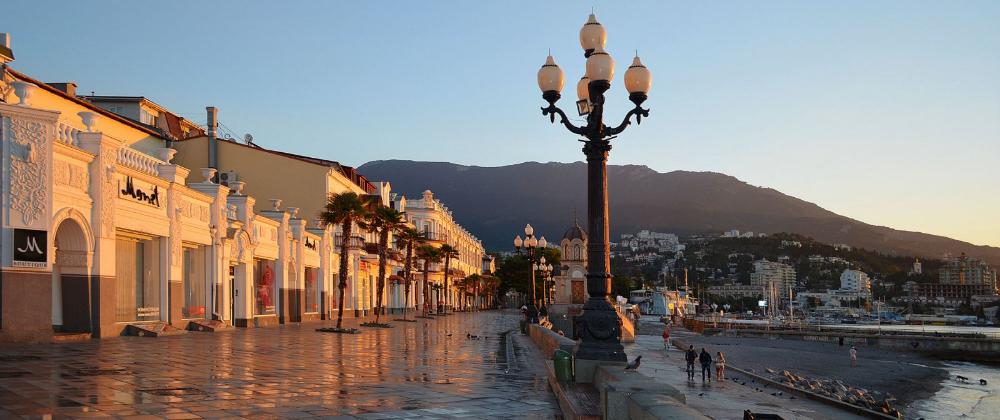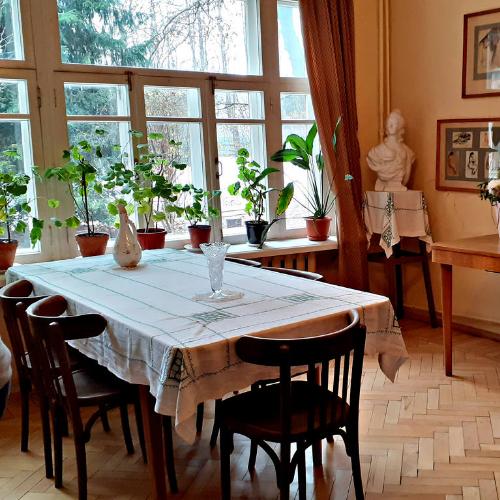Crimea is a place of collision of great empires, which left their marks on this small peninsula. This is the place where the descendants of Genghis Khan ruled and Prince Vladimir was baptized; the palace of the Crimean Khan is adjacent to the Greek polis, the base of Soviet submarines - with a Genoese fortress, and cave cities - with luxurious imperial palaces! Choose this program and go on a real journey back in time!
Day 1. Simferopol – Bakhchisarai – Sevastopol
- Arrival in Simferopol, meeting with your guide at the airport
- Transfer to Bakhchysarai
- Lunch in a local café
- Excursion to the Khan's Palace in Bakhchysarai
- Excursion to Chufut-Kale cave city- fortress
- Walking tour of this medieval town
- Excursion to the Assumption Monastery of the Caves
- Transfer to Sevastopol
- Dinner in a local restaurant in Sevastopol
- Transfer to the hotel
- Check–in at the hotel ***
Day 2. Sevastopol – Balaklava – Yalta
- Breakfast at the hotel
- Check-out
- Excursion to National Preserve of Tauric Chersonesus
- Walk along Historical Boulevard of Sevastopol
- Excursion to the Museum of The Defense of Sevastopol
- Sightseeing tour of Sevastopol
- Transfer to Balaklava
- Lunch in a local café
- Excursion to the old submarine museum in Balaklava
- Walking tour of Balaklava, excursion to the Cembalo fortress
- Transfer to Yalta, check-in at the hotel
- Dinner in a local restaurant.
- Overnight at the hotel *****
Day 3. Yalta – Alupka – Livadia – Yalta
- Breakfast at the hotel and departure for Alupka
- Excursion to the Vorontsov Palace
- Cable car ascending Ai-Petri, a peak in the Crimean Mountains
- Transfer to Livadia and photo-stop at The Swallow's Nest castle. Lunch in a local restaurant
- Excursion to the Livadia palace where Franklin Roosevelt, Winston Churchill, and Joseph Stalin met during the Yalta Conference in 1945
- Return transfer to Yalta, dinner in a local restaurant
- Night walking tour of Yalta
- Overnight at the hotel
Day 4 Yalta – Sudak – Koktebel – Feodosia
- Breakfast at the hotel
- Check-out and departure for Sudak
- On the way: excursion to lighthouse temple dedicated to Saint Nicholas
- Excursion to the Genoese Fortress of Sudak
- Lunch in a local café in Sudak
- Transfer to Koktebel
- Yacht cruise along the ancient extinct volcano Kara Dag
- Transfer to Feodosia
- Sightseeing tour of Feodosia and dinner in a local restaurant
- Check-in and overnight at the hotel **** in Feodosia
Day 5. Feodosia – Simferopol
- Breakfast at the hotel
- Check-out and departure for excursions
- Excursion in the National Art Gallery named after Ivan Aivazovsky
- Transfer to Simferopol
- On the way: photo-stop at the foot of Mount Ak-Kaya
- Lunch in a local café in Simferopol
- Transfer to the airport of Simferopol and departure
DURING THE TOUR YOU WILL SEE:
- Bakhchisarai – the capital of the Crimean Khanate, founded in 1532 by one of the khans of the Gireev dynasty, “garden-palace”. It still preserves the atmosphere of a medieval city, transporting tourists back to the time of reign of the formidable descendants of Genghis Khan. You will begin your acquaintance with Bakhchisarai from the place of its origin, because the construction of the city began with the new Khan's palace - Khan-Sarai! This is the only example of the Crimean Tatar palace architecture in the world, a stone embodiment of the history of the Crimean Khanate. Each ruler contributed to the creation of this masterpiece: new halls, a mosque, baths, stables, towers and, of course, fountains, including the famous Fountain of Tears. Here you will not find huge ballrooms and high ceilings, so familiar to us in the palaces of European monarchs. Built in the tradition of Ottoman architecture, this palace embodies the Muslim vision of a Garden of Eden on earth.
- Just three kilometers from the Bakhchisarai Palace is the next destination of your journey – Chufut-Kale, the largest cave city and the first residence of the Crimean khans. This ancient fortress city, founded by the Byzantines in the 5th century, is located on a small plateau and protected by deep gorges. At all times, getting here was very difficult. By off-road vehicles you will climb to the eastern gate of the fortress, from where your excursion to this unique place, where architecture has merged with miraculous cave labyrinths, will begin. Going down from the plateau, be careful – here, surrounded by inaccessible mountains, in the gorge of St. Mary, the Holy Dormition Monastery, founded at the end of the VIII century, is hidden. The residence of the Gottf Metropolitans, the keeper of the miraculous icon of the Mother of God, the center of Christianity on the peninsula, this active monastery attracts attention not only for its history, but also for its magnificent panorama that leaves no one indifferent.
- Sevastopol – the base of the Russian Black Sea Fleet, founded in 1783 by order of Catherine II, and built under the watchful eye of Russian admirals. And although Sevastopol was founded only in the 18th century, its history began long before that – from the Greek city "Chersonese Tauric", which appeared on the map of the peninsula around the 5th century BC. In this open-air museum, you will learn about the life of the Greek colonies, walk along the streets of a real ancient polis, visit the amphitheater, and, of course, the agora – the central square, where the remains of the temples of the Olympian gods are adjacent to Christian cathedrals. It was in Chersonesos, according to legend, that the future baptist of Russia, Prince Vladimir, was baptized in 988. After visiting Chersonesos, you will go on a sightseeing tour of the center of Sevastopol to get a closer look at the history of the city of Russian sailors. You will walk along Primorsky Boulevard – the main resort promenade of the city, see Admiral Nakhimov Square - the birthplace of Sevastopol, the Grafskaya Wharf and a monument to the sunken ships. Acquaintance with the city cannot be considered complete without visiting the panorama "Defense of Sevastopol in 1854 – 1855". Dedicated to the heroic 349-day defense of the city, the panorama was opened in 1905, in honor of the 50th anniversary of the defense of Sevastopol, and miraculously survived almost in full during the Great Patriotic War.
- Balaklava is an ancient city, first mentioned in Homer's “Odyssey”. It’s the place where one of the most convenient bays of the Black Sea coast is located. However, even 50 years ago, you would not have found it on the map of the peninsula as, here, in the undergrounds of Mount Tavros, was the secret base of Soviet submarines. Now on the site of the base there is a museum, where you can see the base of shelters for boats from a nuclear strike, a 600-meter long navigable canal and an arsenal of nuclear weapons. And all this in underground labyrinths at a depth of about 126 meters. On the surface, you will find a sightseeing tour of the city and a visit to the medieval fortress of Cembalo, founded by the Genoese in 1343. Like any sight of the Crimea, it had a turbulent history: the confrontation between the Genoese, the Greek principality of Theodoro and the Crimean Tatars ended in 1475 with the Ottoman conquest. And the new Turkish name of the fortress Balyk-yuv later became the name of the city.
- Alupka is a resort immersed in greenery, spread out on the southern coast of the peninsula, at the foot of the majestic Ai-Petri mountain. After joining the Russian Empire in 1784, this paradise was first presented by the empress to her favorite, Grigory Potemkin, and then became the property of General-Field Marshal Mikhail Semenovich Vorontsov. It is the Vorontsov Palace that has continued to remain the pearl and the hallmark of the city since the 19th century. In the architecture of the palace, Edward Blore, the author of Walter Scott's Castle in Scotland, combined different styles - English, Neo-Moorish and Gothic. And most importantly, the architect, who never personally visited the construction site, managed to perfectly fit the building into the surrounding landscape, deploying it in such a way that it repeats the outlines of the visible mountains. The palace, as if descended from the pages of knightly novels, is ideally complemented by two luxurious parks. The Upper Park was created on the principle of English landscape parks, and the Lower one is decorated in the style of Italian Renaissance gardens. After a tour of the palace, you will take a cable car to the symbol of the Crimean coast - Mount Ai-Petri, which rises 1231 meters above sea level. Here you will see an incredibly beautiful panorama: the distant sea on one side and mountain ranges on the other.
- Village Livadia is the southern residence of the Russian emperors, located 3 km from Yalta. It is "Her Imperial Majesty's own dacha", where, before the revolution, entry to outsiders was strictly prohibited. And nowadays everyone can go on an excursion to the Livadia Palace, which competes with the Vorontsov Palace for the title of the most luxurious residence in Crimea. The airy snow-white palace is made in the spirit of Italian palazzo, and its center is a tropical garden. In the first part of the tour, you will visit the study of the last Russian emperor Nicholas II, the boudoir of his wife, the princess room, the bedroom and the royal dining room. You will find a story about the construction of the palace, life and rest in Livadia of Russian tsars and their families. The second part of the excursion will acquaint you with a special period in the life of the palace, when in February 1945 the Yalta conference of the three allied powers - the USSR, the USA and Great Britain – was held here, which determined the post-war world order.
- Yalta is the resort capital of Crimea, where the Russian intelligentsia began to travel on vacation already in the second half of the 19th century. You will go on a leisurely evening excursion around the historical center of Yalta, along the Black Sea coast. Magnificent corners of old Yalta, blossoming evergreen gardens and parks, delightful architecture of the city, famous people who came to rest in Yalta - all this awaits you in the guide's story. During the walk you will understand how in just 60 years from an unknown settlement Yalta has turned into the best resort of the Russian Empire - "Russian Nice".
- Sudak is a resort town founded in 212 as an outpost of the Bosporus kingdom. In the Middle Ages this Crimean city was called differently: the Italians spoke about it – "Soldaya", the Greeks - "Sugdeya", and the Russian princes called the city – "Surozh". For almost two thousand years of history, Byzantines and Tatars, Venetians and Genoese, Ottomans and Russians reigned here. The Genoese fortress, built in the 14th century on top of the Fortress Mountain, has become one of the city's most famous and well-preserved landmarks. The fortress complex consists of two lines of defense: external (St. Cross Castle) and internal (St. Elijah Castle). Its favorable location and powerful fortifications made it practically impregnable. During the tour you will learn about the life of the medieval Italian colony, the structure of the fortress and its role in the turbulent history of the city.
| The cost of such an event | from 814 euro per pax (in groups from 30 pax) |
Other tours

«TASTING»
This tour is recommended for travelers, who want in 2 days see all the main sights of St. Petersburg: see famous suburb of Pushkin and Peterhof, walk along Nevsky Prospekt and visit the famous Hermitage Museum.- Share with friends:

